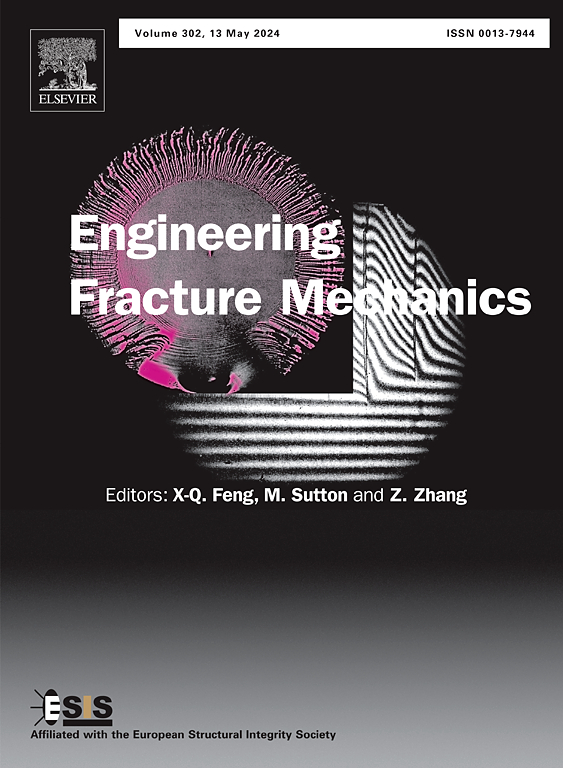Investigation of microscale brittle fracture opening in diamond with olivine inclusion using XFEM and cohesive zone modeling
IF 4.7
2区 工程技术
Q1 MECHANICS
引用次数: 0
Abstract
Inclusions trapped in diamonds are a fundamental source of information to probe the Earth’s interior, provided that the pressure conditions at which the diamond grew are correctly determined. This study explores the traditional assumptions in geothermobarometry for olivine-in-diamond host-inclusion systems by employing extended finite element methods (XFEM) and cohesive zone models (CZM) to quantify the contributions of brittle fractures to the relaxation of the residual stress of inclusions. Our analysis was performed assuming that the host-inclusion system does not contain fluids and that the unfractured minerals are elastically isotropic. Our models show that the damage initiation is solely dependent on the shape of the inclusion and on the fracture strength of the diamond host, while the fracture nucleation is influenced by both the size of the inclusion and the toughness of the diamond. Our findings indicate that, in dry systems, the amount of relaxation of residual stress of the inclusion due to the opening of brittle fractures is much lower than that due to the elastic interaction between the host and the inclusion. Moreover, the pressure release due to fractures is not substantially affected by the shape of the inclusion. We also show that the total relaxation of the residual pressure due to the combined effect of the elastic interaction and the brittle deformation is lower than what is observed in natural samples, even when assuming fracture strength and toughness lower than those reported from experiments on single crystals of diamond. Such discrepancies suggest that in natural olivine-diamond systems additional mechanisms such as viscous or plastic deformation and/or the presence of preexisting defects and fluids in the host might play a relevant role in the relaxation of the residual stress. These findings underscore the need for advanced numerical tools that consider the complex interplay of the geometry of the host-inclusion system, the fracture properties, and the presence of fluids and defects in order to build more accurate models to constrain the geological history of diamonds.
求助全文
约1分钟内获得全文
求助全文
来源期刊
CiteScore
8.70
自引率
13.00%
发文量
606
审稿时长
74 days
期刊介绍:
EFM covers a broad range of topics in fracture mechanics to be of interest and use to both researchers and practitioners. Contributions are welcome which address the fracture behavior of conventional engineering material systems as well as newly emerging material systems. Contributions on developments in the areas of mechanics and materials science strongly related to fracture mechanics are also welcome. Papers on fatigue are welcome if they treat the fatigue process using the methods of fracture mechanics.

 求助内容:
求助内容: 应助结果提醒方式:
应助结果提醒方式:


